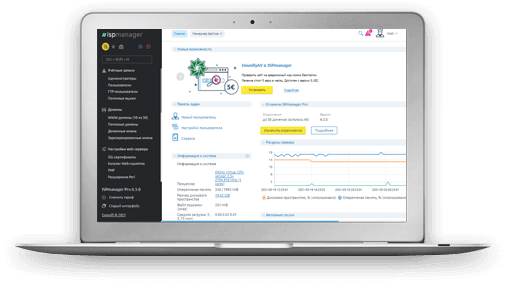- Web hosting
- Services
- Help
Dedicated server
Rent a dedicated server based
on Intel and AMD processors
in Germany

Dedicated server
Rent a dedicated server based on Intel processors in Germany
Core i5-13500 1.8-4.8GHz (14 cores)
RAM
64Gb RAM
HDD
2x512Gb NVMe (NRB)
Setup fee 69 €
69 €
per month
AMD Ryzen 7 7700X 3.8-5.3GHz (8 cores)
RAM
64Gb RAM
HDD
2x1000Gb NVMe (NRB)
Setup fee 69 €
109 €
per month
Core i9-13900 1.5-5.6GHz (24 cores)
RAM
64Gb RAM
HDD
2x2000Gb NVMe (NRB)
Setup fee 69 €
149 €
per month
AMD Ryzen 9 7950X3D 4.2-5.7GHz (16 cores)
RAM
128Gb RAM
HDD
2x2000Gb NVMe (NRB)
Setup fee 69 €
189 €
per month
2 x Xeon Silver-4214 2.2-3.2GHz (24 cores)
RAM
256Gb RAM
HDD
2x4000Gb NVMe (NRB)
Setup fee 299 €
499 €
per month
2 x Xeon Gold-6338 2.0-3.2GHz (64 cores)
RAM
512Gb RAM
HDD
4x8000Gb NVMe (NRB)
Setup fee 299 €
999 €
per month
2 x AMD Epyc 7663 2.0-3.5GHz (112 cores)
RAM
512Gb RAM
HDD
4x8000Gb NVMe (NRB)
Setup fee 299 €
1499 €
per month
2 x AMD Epyc 7763 2.45-3.5GHz (128 cores)
RAM
1024Gb RAM
HDD
4x15360Gb NVMe (NRB)
Setup fee 299 €
1999 €
per month
Variety of upgrade options available for bare-metal servers
Variety of upgrade options available
Reliable technology and modern equipment
We offer proven solutions based on Intel Xeon E3, E5, Intel Core
and adopt new products:
Xeon E and AMD Ryzen
Server
DDoS protection
DDoS protection
Optional DDoS protection available. We offer 95% guarantee against
network-level DDoS attacks.
Expert technical support
Technical support team is available 24/7, free of charge. We offer
fully managed bare-metal dedicated servers.
ispmanager Control Panel

Enjoy your dedicated server experience with the ispmanager control panel, even if you’re a beginner.
No command line knowledge required
Everything you need is available straight from the browser window: user and
domain management, mail setup, backups creation, file upload, DNS, FTP, PHP,
Databases and much more.
Learn more
about the control panel
Install popular CMS in just 3 clicks
Install Wordpress, Joomla, Drupal and more in just 3 clicks, right from the control panel, and start creating a website.
Fully managed servers
Our experienced engineers will make sure your hosting service is at its top performance. We’ll tailor the server to your needs and install any mandatory software. You needn’t worry if you had no prior experience maintaining a website, we’ll do everything necessary for you, free of charge.
Server Configuration
We’ll optimally prepare the server and configure the web environment.
Migration assistance
We’ll transfer your data from another hosting provider and deploy the backups if necessary.
Troubleshooting
In case something stops working we’ll find out why and fix it. We’ll walk you through the steps for the same to not occur again, and offer our full assistance setting up additional software you may need. If you need customized software, we will provide you detailed installation instructions, or install it for you.
Software Installation
We'll install an operating system, additional server software and a CMS for you. Get in touch with the technical support to arrange the time.
Security Monitoring
We support our customers’ needs to secure their data and protect their websites from intruders. Therefore, we help by setting up protection against DDoS attacks and switch to HTTPS protocol, by installing an SSL certificate, for data encryption.
70% of support requests are solved within 15 minutes
We reply around the clock, 7 days a week
99,9% Uptime Guaranteed
Our hosting services are rendered strictly in accordance
to the Terms of Service.
We guarantee a refund set by the SLA.
Order dedicated server
Or choose a ready server from the list above or configure your own.
Click “Order” and go to the client area for registration and purchase.
Once the service is paid for, access details will be emailed to you.
